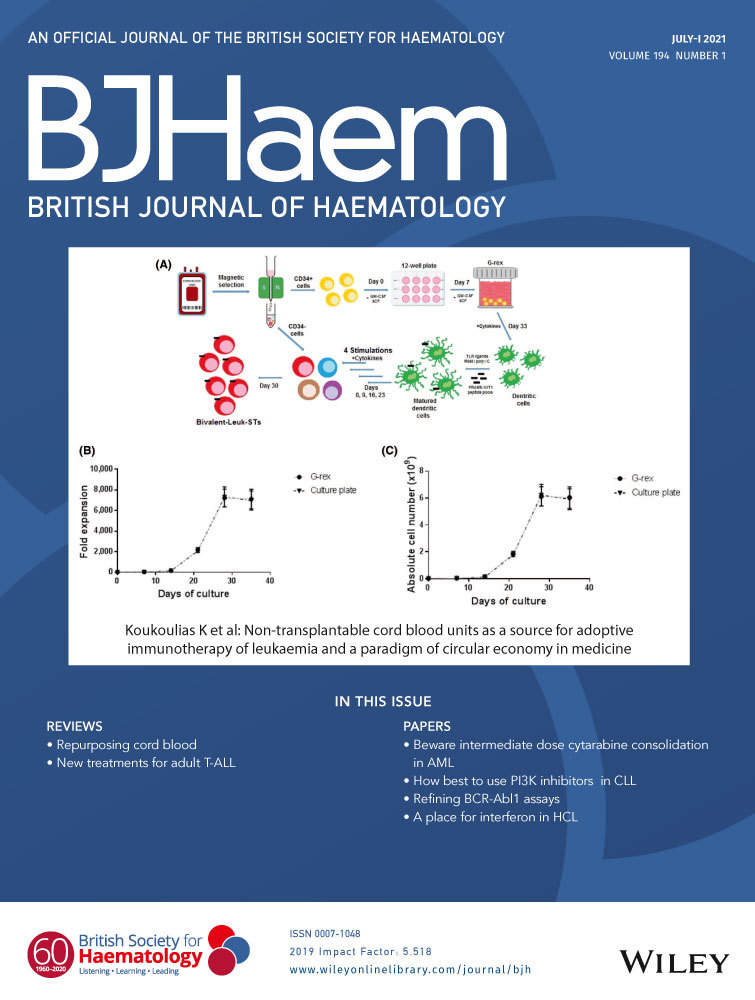High risk of relapse with intermediate dose cytarabine for consolidation in young favourable-risk acute myeloid leukaemia patients following induction with 7+3: a retrospective multicentre analysis and critical review of the literature
BCK and NAAH are co-first authors; ZL and FH are co-last authors.
Summary
Following the 2017 European LeukemiaNet (ELN) guidelines, we changed our practice from using high-dose cytarabine (HIDAC-3 g/m2 q12h-D1,3,5) to intermediate-dose cytarabine (IDAC-1·5 g/m2 q12h-D1,3,5/D1–3) for consolidation in young(<60 years) favourable-risk acute myeloid leukaemia (AML) patients. We assessed the clinical impact of this practice change. Of 80 patients, 51 received HIDAC prior to the protocol change, and subsequently, 29 received IDAC. The three-year risk of relapse was significantly higher with IDAC [61%; 95% confidence interval (CI) 40–82] compared with HIDAC (22%; 10–34), P < 0·01. Our findings suggest HIDAC, rather than IDAC, is the preferred dose for single-agent cytarabine consolidation in young, favourable-risk AML following 7+3 induction.
Conflict of interest
None of the authors received funding support for the conduct of this study. Support received outside of this study: DW received research support from FATE therapeutics and Incyte; ZL received NMRC research training fellowship, speaker fees from Astellas and Amgen, honoraria from Astellas, Amgen and Novartis; ZS received research reagents from Jazz pharmaceuticals, research funds and reagents from Stemline therapeutics; FH received consultant fees from Abbvie and Magenta therapeutics.




